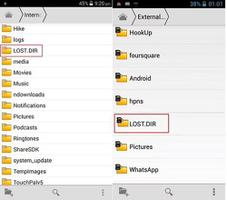敏捷模型与其他模型的比较
在本文中,我们将比较敏捷范式的特性与其他模型的特性。
瀑布模型与敏捷模型
什么是瀑布方法,它是如何工作的?
瀑布模型也称为线性顺序生命周期模型。由于瀑布模型是按顺序执行的,因此项目开发团队只有在上一步成功完成后才能进行下一阶段的开发或测试。
什么是敏捷方法,它是如何工作的?
敏捷方法是一个概念,它通过允许开发和测试的持续迭代来帮助软件开发过程。与瀑布范式不同,在这种方法下,开发和测试是同时进行的。这种方法可以帮助客户、开发人员、经理和测试人员更有效地进行沟通。
瀑布和敏捷之间的主要区别
敏捷是软件开发过程中开发和测试的不断迭代,而瀑布是线性顺序生命周期模型。
敏捷技术以其灵活性着称,而瀑布方法则是一个严格的软件开发过程。
当比较瀑布和敏捷方法时,敏捷方法是增量的,而瀑布是顺序设计过程。
测试与敏捷中的软件开发同时进行,而测试是在瀑布技术中的“构建”步骤之后进行的。
敏捷允许修改项目开发需求,而瀑布不允许在项目进行时进行更改。
瀑布模型的好处
它是最简单的模型之一。每个阶段都有特定的可交付成果和根据其性质的审查程序。
它适用于具有简单需求的小项目。
在更短的时间内完成项目
过程和结果都被彻底记录下来。
易适应的团队重组方法
在管理依赖项时,这种项目管理风格派上用场。
敏捷模型的好处
这是一个以客户为中心的程序。因此,它确保客户随时了解情况。
敏捷团队具有高度的积极性和自组织性,因此开发项目更有可能提供卓越的结果。
敏捷软件开发技术可确保保持开发质量。
整个过程建立在逐步发展的基础上。因此,客户和团队都知道什么是完整的,什么是不完整的。因此,降低了开发过程的风险。
瀑布模型限制
它不是大型项目的最佳模型。
如果需求从一开始就不是很明显,那么这是一种不太有效的策略。
回到之前的阶段并进行修改真的很难。
开发阶段完成后,开始测试阶段。因此,很可能会在开发后期发现缺陷,因为修复它们的成本会更高。
敏捷模型限制
对于适度的发展计划,这种策略是无效的。
为了在会议中做出关键选择,需要专家。
与其他开发方法相比,采用敏捷过程的成本要高一些。
如果项目经理不知道他或她想要什么结果,项目可能很快就会偏离轨道。
敏捷模型和瀑布模型之间的差异
以下是敏捷和瀑布方法之间的比较 -
| 敏捷 | 瀑布 |
|---|---|
| The project development lifecycle is divided into sprints. | 软件开发过程有许多阶段。 |
| It takes a step-by-step method. | 瀑布技术是一种按渐进顺序进行设计的方法。 |
| Agile methodologies are noted for their adaptability | 因为瀑布是一种结构化的软件开发技术,它有时可能非常严格。 |
| Agile may be thought of as a collection of many projects. | 软件的开发将作为一个单独的项目进行。 |
| Agile is a flexible strategy that enables modifications to project development that needs to be made even after the original planning is complete. | 一旦项目开发开始,就无法更改规格。 |
| Because Agile methodology uses an iterative development approach, planning, development, prototyping, and other software development stages may occur several times. | 在瀑布方法中,所有项目开发阶段,例如设计、开发和测试,都一次性完成。 |
| After each sprint, the test plan is evaluated. | 在测试阶段,很少交流测试策略。 |
| Agile development is a method of software development in which needs are anticipated to change and evolve over time. | 该技术非常适合具有特定需求和意外修改的项目。 |
| Testing is done simultaneously with software development in the Agile process. | “测试”步骤遵循此技术中的“构建”阶段。 |
| Agile presents a product mentality in which the software product meets the requirements of its end users and adapts to their expectations. | 这种方法展示了一种项目心态,并且只专注于完成工作。 |
| With Time & Materials or non-fixed financing, the Agile approach performs incredibly effectively. In fixed-price circumstances, it may create tension. | 通过在流程开始时获得风险协议,可以降低固定价格合同中的风险。 |
| Small, focused teams with a high level of coordination and synchronization are preferred. | 团队协调和同步的能力受到严重阻碍。 |
| Almost every day of a project, the product owner and his team create requirements. | 在项目开始之前,业务分析师建立需求。 |
| The test team may easily participate in requirement changes. | 要求的任何变化都很难开始测试。 |
| During the SDLC process, the description of project specifics may be changed at any moment. | 要使用瀑布式软件开发技术,需要详细描述。 |
| As a consequence of the Agile Team's interchangeability, they work more quickly. Project managers are also unnecessary since the projects are controlled by the whole team. | 因为在瀑布技术下这个过程通常很容易,所以在 SDLC 的每个级别都需要项目经理。 |
探索性编程与敏捷模型
| 敏捷模型 | 探索性编程 |
|---|---|
| Each incrementally delivered portion is built via an iteration following each timebox in an agile paradigm. | 探索性编程是一种开发非结构化程序的方法。 |
| Agile teams, on the other hand, adhere to well-defined and disciplined methods that include systematic requirements gathering and thorough design. | 探索性编程违反了软件工程惯例,允许创建和评估非结构化代码。 |
| After each iteration, the Agile model's primary principle is to provide an incremental version to the client. | 开发完成后,对程序进行测试并修复检测到的任何缺陷。这种测试和问题修复的循环一直持续到程序满足客户的期望。 |
敏捷与 RAD:哪个更好?
| 敏捷模型 | 雷达型号 |
|---|---|
| The Agile paradigm discourages the creation of prototypes, preferring instead to focus on the methodical development of each incremental feature at the conclusion of each cycle. | RAD 的核心概念是创建快速而肮脏的原型,然后将其开发为生产质量的代码。 |
| Agile initiatives logically split the solution down into features that are created and delivered in stages. | RAD 范式专注于构建应用程序的所有功能,方法是一开始做得很差,然后随着时间的推移逐渐改进代码。 |
| After each iteration, the Agile team only shows the client finished work. | RAD 团队可能会向客户展示屏幕模型和原型,尽管这些可能基于简化,例如数据库查找而不是实际计算。 |
| Tiny projects are not ideal for the agile approach since it is difficult to break the project into small components that may be produced progressively. | 当公司没有从事几乎相同的项目时,很难采用 RAD 范式,因为无法重用以前的代码。 |
增量开发与敏捷开发
| 敏捷开发 | 增量开发 |
|---|---|
| Each incrementally delivered portion is built via an iteration following each time box in the Agile paradigm. The Agile model's core idea is to create agility by eliminating tasks that waste time and effort. | 软件的需求被分解为可以分阶段构建和提供的各种模块。最初创建基本功能,然后在连续版本中将附加功能添加到程序中。 |
| In the Agile paradigm, an iteration's end date is set and cannot be amended. To finish that iteration on schedule, the development team may have to opt to minimize the supplied functionality. | 在增量开发方法中,完成下一次迭代没有设定的截止日期。 |
螺旋模型与敏捷模型
| 敏捷模型 | 螺旋模型 |
|---|---|
| The Agile model's core idea is to create agility by eliminating tasks that waste time and effort. | 螺旋模型的基本概念是风险管理。 |
| The Agile strategy emphasizes delivering an increment to the client after each Time-box, resulting in more frequent customer involvement. | 螺旋模型主要处理许多类型的计划外危险,但是,客户参与度最低。 |
| The agile paradigm is best suited for huge projects that can be broken down into tiny chunks and developed progressively over time. | 螺旋模型适用于容易受到各种在一开始就难以预测的危害的项目。 |
| Documentation is not used in the agile paradigm. | 对于螺旋模型,适当的文档是必不可少的。 |
以上是 敏捷模型与其他模型的比较 的全部内容, 来源链接: utcz.com/z/362206.html






